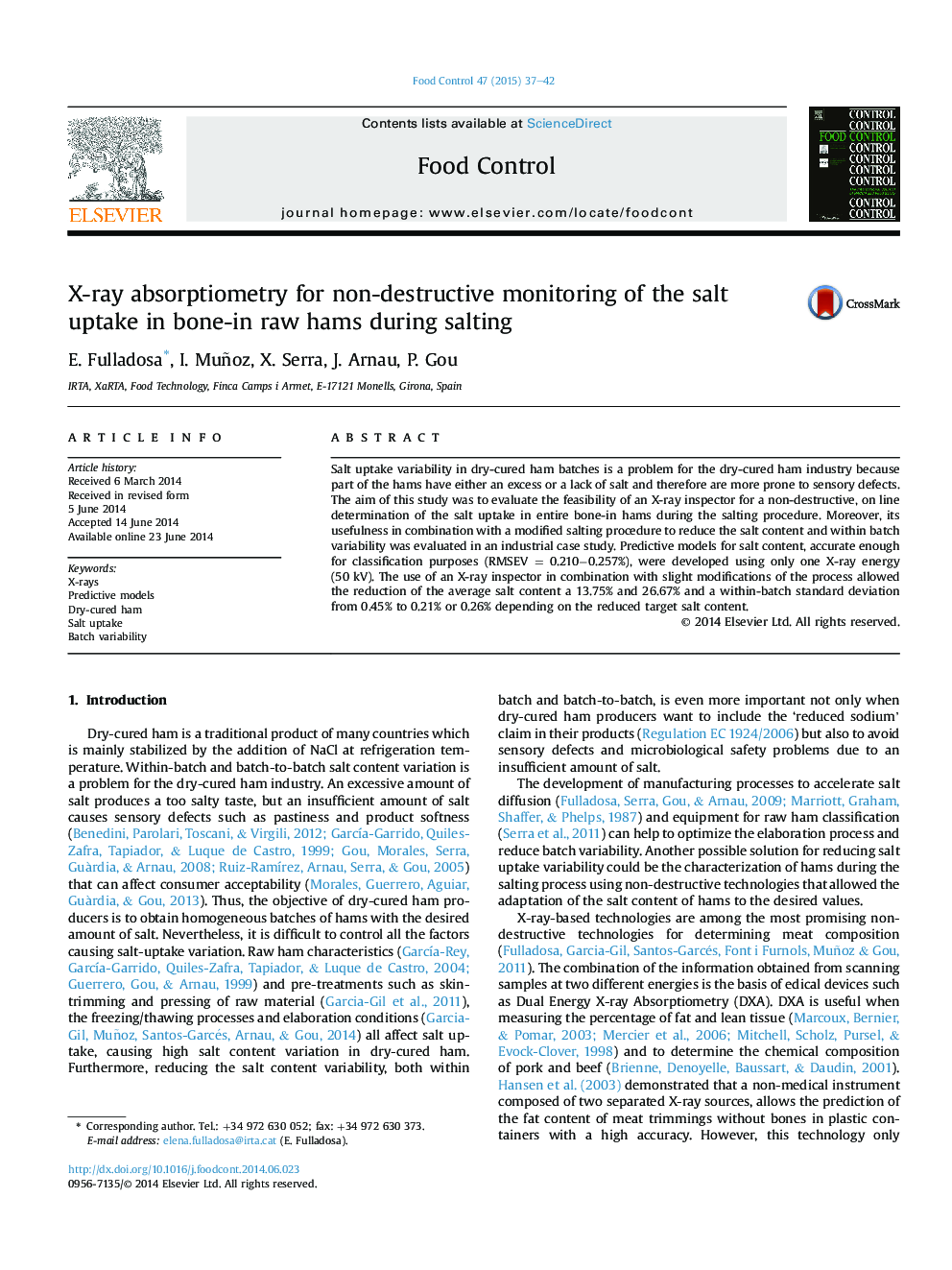| Article ID | Journal | Published Year | Pages | File Type |
|---|---|---|---|---|
| 6391318 | Food Control | 2015 | 6 Pages |
â¢X-ray inspectors can predict salt uptake of hams during the salting process.â¢Only one incident energy is needed to predict accurately enough salt content in hams.â¢Salt, water and fat contents of the hams do not affect salt content prediction error.â¢Salt uptake variability can be reduced by adapting the salting process.â¢Salting process is adapted according to the predicted salt content by X-ray.
Salt uptake variability in dry-cured ham batches is a problem for the dry-cured ham industry because part of the hams have either an excess or a lack of salt and therefore are more prone to sensory defects. The aim of this study was to evaluate the feasibility of an X-ray inspector for a non-destructive, on line determination of the salt uptake in entire bone-in hams during the salting procedure. Moreover, its usefulness in combination with a modified salting procedure to reduce the salt content and within batch variability was evaluated in an industrial case study. Predictive models for salt content, accurate enough for classification purposes (RMSEVÂ =Â 0.210â0.257%), were developed using only one X-ray energy (50Â kV). The use of an X-ray inspector in combination with slight modifications of the process allowed the reduction of the average salt content a 13.75% and 26.67% and a within-batch standard deviation from 0.45% to 0.21% or 0.26% depending on the reduced target salt content.
